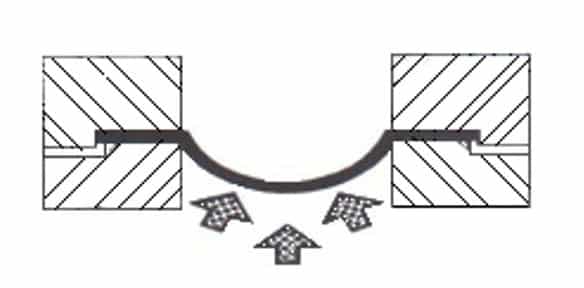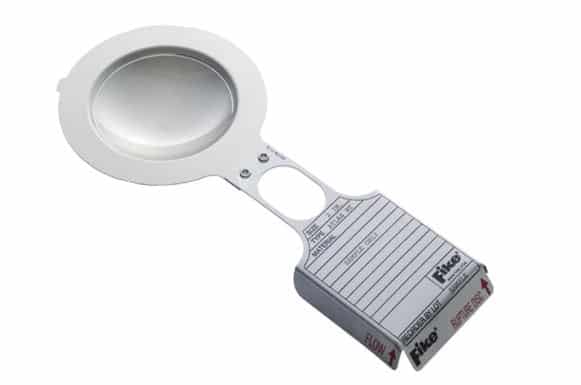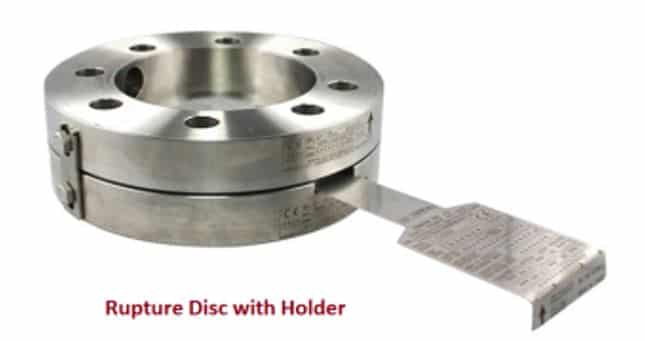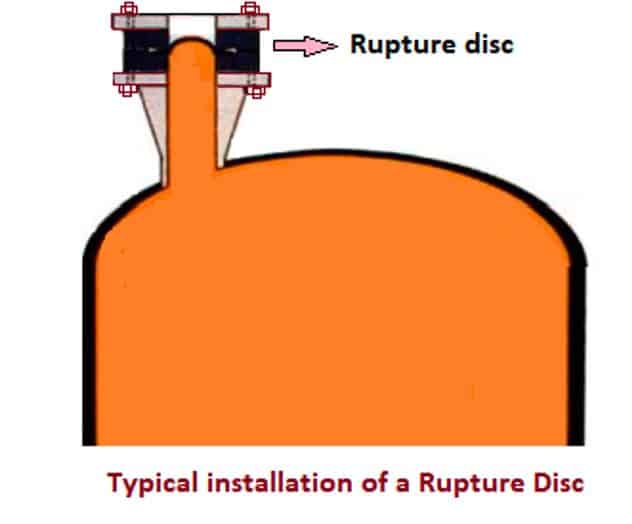A Rupture Disk is a pressure relief device that actuates by static differential pressure between the inlet and outlet of the device causing bursting of a rupture disk.
In industrial facilities, managing situations of excessive pressure is an essential safety requirement for both equipment, workforce on the floor, and structures. Apart from safety automation systems, today, rupture discs are the perfect tool to ensure complete security.
What is a rupture disk?

RUPTURE DISCS are safety, and protection devices with the function of preventing unexpected pressure fluctuations from harming an industrial installation. The safety of men and machines is of utmost importance.

Basically, rupture discs consist of a thin membrane made of different materials depending on the specific need. The thin membrane break when the specific level of differential pressure is across a unit. When the pressures rise above the resistance limit for which the disc has been originally calibrated., to allow excessive pressure safely.
Materials of Rupture Disk:
Rupture discs are made of a wide range of materials like Stainless steel 316, Carbon steel, and alloys with Hastelloy, Monel, Titanium, Tantalum, polymers, plastics, graphite, etc.,
Disc Holder:
It holds the Rupture plate or disc in between the holder.

How does a rupture disk drive work?
Rupture discs are devices that carry the same basic function as safety valves. However, the main difference is that they intervene as a result of the differential pressure to which they are subjected. It is noted that after a burst of the disc they cannot be closed again. Once they have been opened, they must be replaced with another new one.
Rupture discs are located upstream of the pressure relief valve.

Rupture discs are usually devices that are made up of an assembly that also includes a special container called a DISC HOLDER. When it is necessary, other components, such as back pressure support, A VACUUM SUPPORT, a ring reinforcement, a rupture indicator, etc. are also included.
Rupture discs are pressurized devices designed to open when a preset pressure value is reached. There are different types of rupture discs made of graphite, plastics, and corrosion-resistant metal. They can cover a wide range of sizes, burst pressures, and operating temperatures.
Benefits with Rupture Disk:
Rupture discs are generally the most economical solution compared to other types of pressure relief devices.
- Rupture discs are available with a variety of materials, in a wide range of sizes, and calibration pressures.
- They have a low maintenance cost.
- If rupture disc bursts it is easily replaceable.
- Rupture discs are an economical solution compared to pressure relief valves.
- They are available in wide pressure ranges and calibration ranges.
- They do not have components moving with each other, thus guaranteeing a faster action time compared to other pressure relief safety devices.
- Ensure an excellent level of sealing, which helps reduce the risk of fugitive emissions of toxic, harmful, or precious substances.
- They allow isolating the safety valve from contact with corrosive or impure fluids.
Rupture disk standard:
Rupture discs are certified according to the strict regulations dictated by ASME.
In many sectors, such as the Petrochemical sector, the regulations required by systems throughout the world are very rigorous, established by ASME.
The Rupture Disc is a protection device, usually metallic, to which a point of its geometric curvature has been weakened so that it can burst at a specific pressure and temperature.
Rupture discs perform the same primary function as pressure relief valves (PRV) but do not operate in the same way.
Terms Related with Rupture Disk
Rated Burst Pressure:
The customer stated the burst pressure value at a matching temperature that indicates the amount of differential pressure needed to cause the rupture disc to burst. A manufacturing range pressure is applied to this value.
Manufacturing Range:
It is a pressure range agreed upon by the customer and manufacturer or supplier in which the nominal (marked) burst pressure must fall. This pressure range is based on a percentage plus and/or minus or a value of plus and/or minus pressure applied around the indicated nominal burst pressure.
Rated (Marked) Burst Pressure
The burst pressure at matching temperature is marked on the rupture disc label after fabrication. An explosion tolerance is applied to this value.
Tolerance:
The pressure variation around the nominal burst pressure (marked) that the rupture disc will burst, at the matching temperature.
Recommended Maximum Operating Pressure:
The rupture disc must be operated at the recommendation of the maximum in order to maximize rupture disc life. This is used as one of the indicators to determine a deserved, capable type of rupture disc for an application.
Usage
Most of the applications are in chemical plants such as Chlor-alkali, Chlorine, Chlorine di-oxide plants.
Read Next: